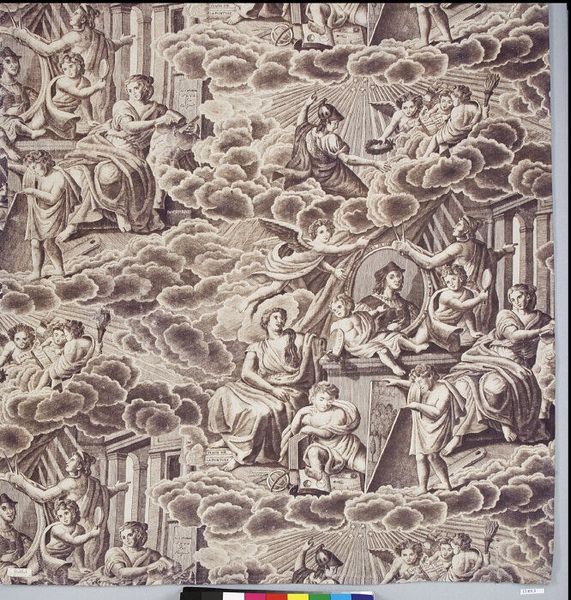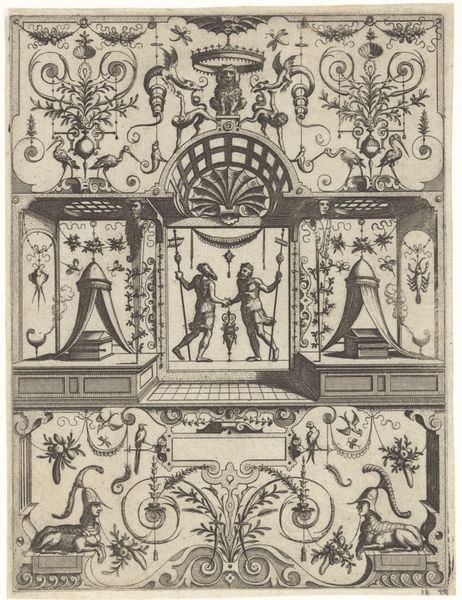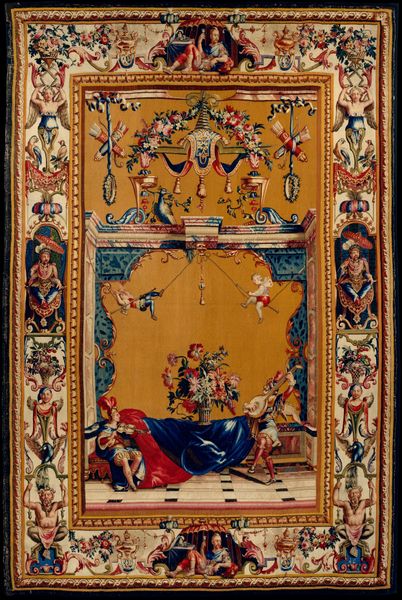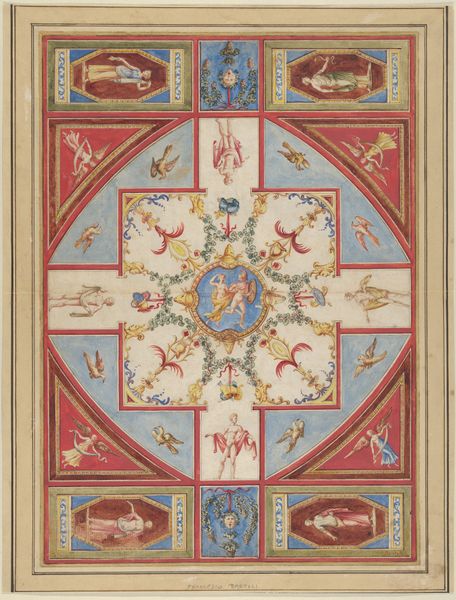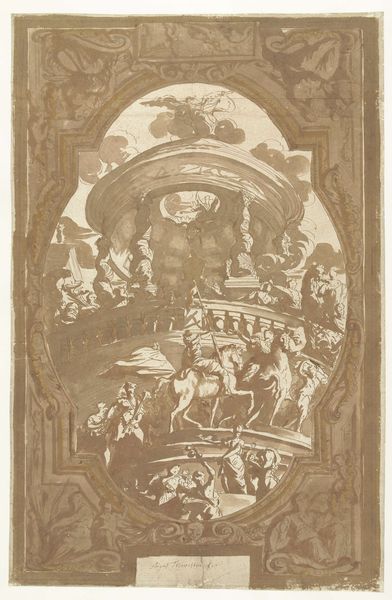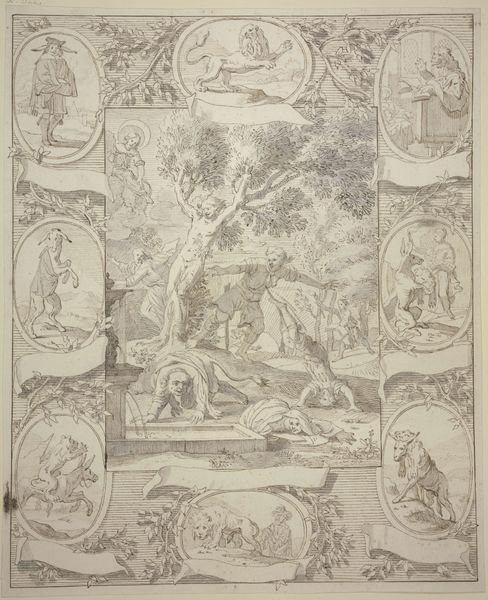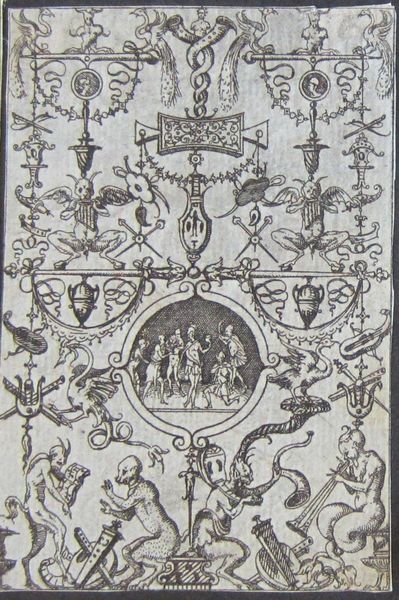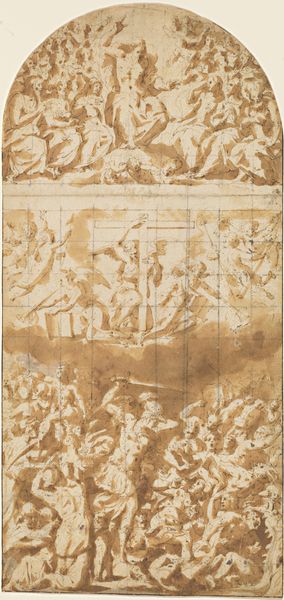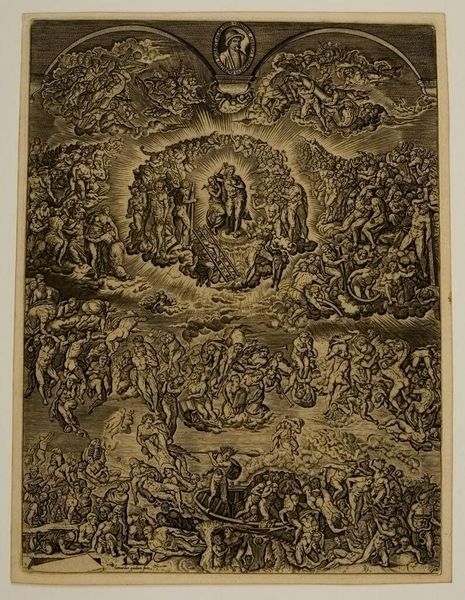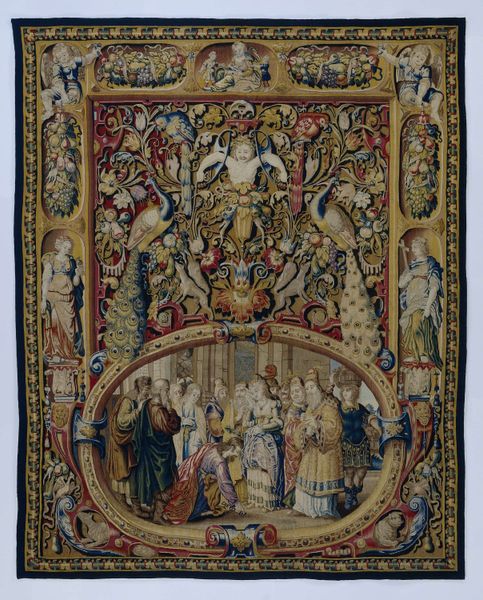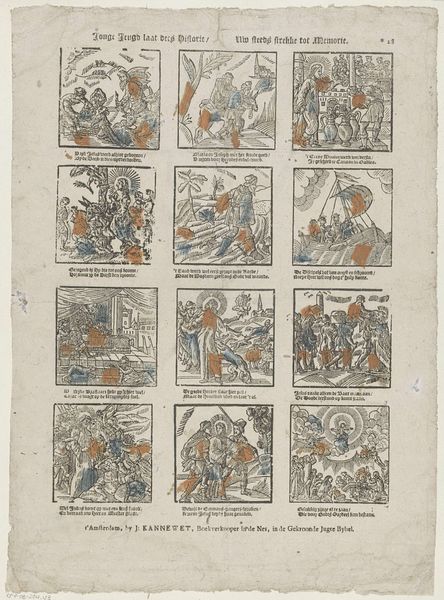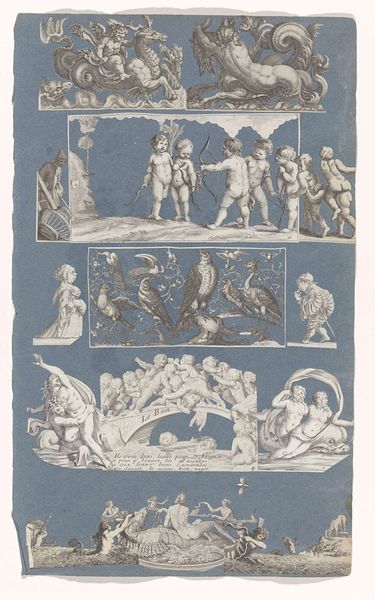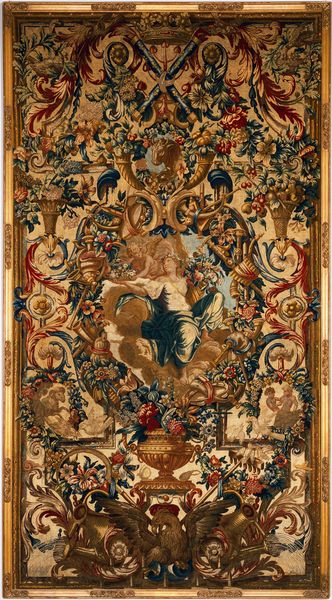
Dimensions: L. 36 3/8 x W. 38 3/4 inches (selvage to selvage) 92.4 x 98.4 cm
Copyright: Public Domain
Curator: What a fascinating piece of textile work! This is a fragment of "Cupid and Psyche," dating from the early 19th century, created sometime between 1805 and 1815. The artist is Jean-Baptiste Huet I, and it's currently held in the Metropolitan Museum of Art. Editor: It’s… busy. There's a very romantic, classical vibe, with repeated vignettes, but almost overwhelming at first glance. It’s decorative in that distinct, period-specific way. Curator: Right. Huet specialized in pastoral and mythological scenes, often reproduced on textiles like this one. This particular design presents various scenes from the classical myth of Cupid and Psyche, illustrating their love story. Consider how the story itself—overcoming obstacles through love and trust—resonated within the societal context of the early 1800s, particularly considering marital expectations and gender roles. Editor: And I wonder about its intended use. It feels luxurious, certainly for a wealthy household, reflecting a desire for domestic display of culture and refined taste. Textiles played a huge role in signaling status. But, in what context would it have been? Drapery, perhaps, or wall covering? Each tableau showcases the unfolding narrative, which is rather rare in repeating fabric patterns. Curator: Absolutely. The narrative aspect is intriguing. I see a parallel to theatrical sets and costuming of the era. In a way, these textiles brought those stories, those roles, directly into people's homes. We might even look at how these domestic performances mirror the changing expectations for women’s interior, private lives. Editor: Yes, and notice the use of classically-inspired architecture in each setting and the ways it's re-imagined through the visual language of decorative art. This piece represents a confluence of elite status and a fascination with stories, especially love stories, and how all of those can be translated into a repeated surface decoration for interiors. The decorative borders themselves create separation but in turn frame those ideas within the context of repeated action and display. Curator: It makes you wonder how the owners interpreted the nuances of each vignette. Were they meant for simple admiration or opportunities to contemplate gender, and social expectations of romance? I think Huet has delivered an intersection of social performance and decorative expression that allows one to rethink decorative works such as this one, it makes you want to imagine the original, complete work that this fragment belonged to. Editor: Exactly, this fragment opens a window into a world where art, storytelling, and societal values were interwoven into the fabric – literally and figuratively – of daily life.
Comments
No comments
Be the first to comment and join the conversation on the ultimate creative platform.
